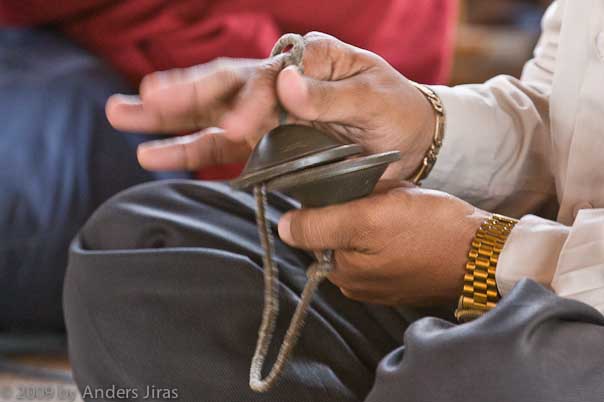Back
Chheung, the hand cymbals.

Chheung (Chhing), the hand cymbals from the Pin Peat orchestra.
There are two main sounds produced with the Chhing. The "chop" sound is produced on strong beats by bringing the two Chhing squarely together, while the "cheung" sound is produced on weaker beats by hitting the Chhing together obliquely with a slashing motion – as in the picture.
Ref. Cambodian Music by Keo Narom, p 236
In Cambodia, we find the chhing (small bowl-shaped finger cymbals) of thick and heavy bronze, with a broad rim. They are made of an alloy (mixture of iron, copper and gold) mixed with bronze. They measure about 2 inches in diameter and are joined together with a cord, which passes through a small hole at the apex of each one ofthem. Each cymbal of the pair is held in one hand and the two are struck together. The chhing are the timekeeper of the ensemble. While cymbals, in general, are used for various occasions (ritual, martial, theater, and at war), the Khmer use them purely in theater, dance and music contexts. They produce open and closed sounds – chhing and chhepp – marked respectively by the signs (o) and (+) in transcriptions. To produce the open sound – chhing – the cymbal in the right hand hits the other in the left with an outward sliding motion, while the closed sound – chhepp – is produced by hitting both cymbals and holding them together: thus dampening the sound. The chhing and chhepp or open and closed sounds of the chhing mark the unaccented (o) and accented (+) beats in the actual music making.
Music Instruments of Cambodia, Sam-Ang Sam, Senri Ethnological Reports 29, National Museum of Ethnology Osaka 2002
Back
